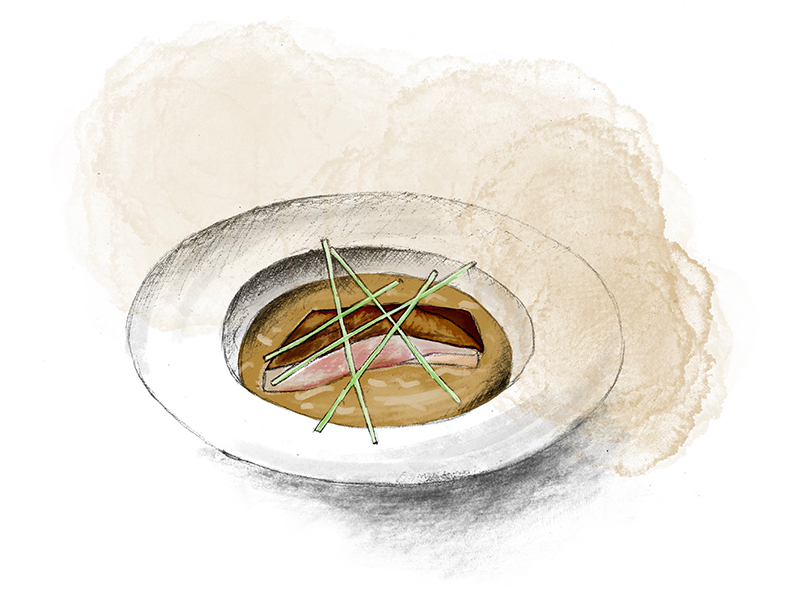
St-Rémy brandy, an ingredient for pastries and savoury dishes alike
Over the years, St-Rémy® brandy has become a prized ingredient in the kitchen for its rich, complex aromas. Used for flambéing desserts such as crêpes Suzette, or for flavoring such as flambéed fruits and cakes like The St-Rémy® mirror, it is also used in savory dishes: brandy sauce to accompany meat, brandy cream added to seafood dishes, marinade to tenderize and flavor meat before cooking like the Marinated poultry recipe, flambéing to give an intense flavor, …
A recipe for culinary fusion between Japan and France
Chef Samuel Albert enjoys blending Japanese and French cuisine. In this new recipe, he uses several typically Japanese ingredients:
The buri, also known as Japanese yellowtail, is a fish highly prized in Japan for its tasty, highly nutritious flesh, rich in antioxidant vitamins. This Japanese endemic fish can grow up to 80 cm when fully grown. Particularly popular in winter, it can be eaten raw as sashimi, for example, or cooked in a variety of Japanese dishes.
Dashi, a basic broth widely used in Japanese cuisine, adds a unique umami flavor. It is used in miso soup, udon noodles, tempura sauces, etc. There are several types, but the two main ones are ..:
Kombu dashi: Prepared with kombu, a dried seaweed rich in glutamate, the source of umami flavor.
Katsuobushi dashi: Prepared from dried bonito (katsuobushi), a fish closely related to tuna, dried, fermented, smoked and finely grated.
Last on the list, hojicha is a very special type of Japanese green tea. Unlike traditional green teas such as sencha or matcha, hojicha is roasted at high temperatures, giving it a reddish-brown color and a mild, slightly caramelized flavor with hints of hazelnut.
For practical reasons, you can replace :
- Buri by mackerel or salmon
- Dashi with vegetable broth
- Kombu with a small amount of soy sauce
- Katsuobushi with dried shiitake mushrooms
- Hojicha tea with another green tea, Genmaicha or Oolong

